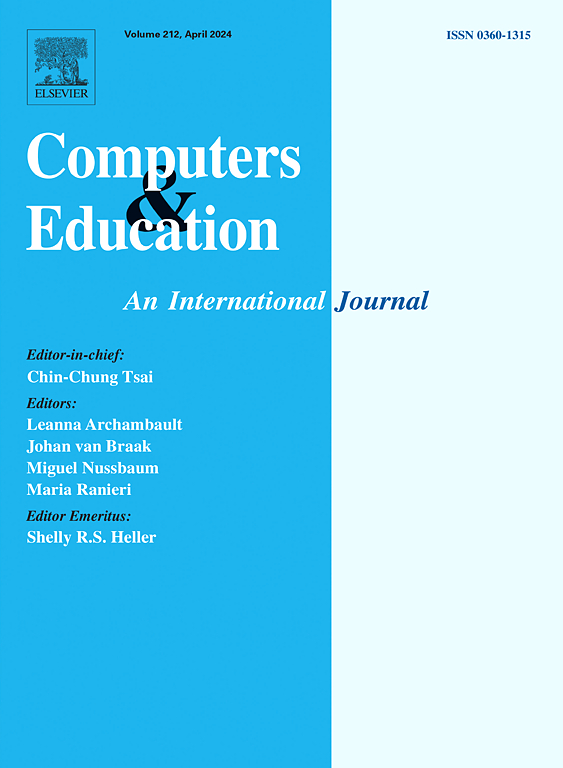Eye tracking technology for examining cognitive processes in education: A systematic review
IF 8.9
1区 教育学
Q1 COMPUTER SCIENCE, INTERDISCIPLINARY APPLICATIONS
引用次数: 0
Abstract
Eye-tracking studies have been increasingly used to investigate student cognitive processes. While some existing literature has reviewed commonly used eye-tracking measures and analytical methods across different contexts, there remains a gap in clarifying the educational themes, cognitive theories, and specific cognitive processes most frequently examined in recent eye-tracking studies. To address this, this review synthesizes recent educational eye-tracking research analyzing student cognitive processes from January 2012 to November 2024. In total, 313 articles were reviewed, and several main findings emerged: (1) The majority of eye-tracking studies examined the themes of multimedia learning, reading performance, and problem-solving, while fewer focused on second language learning, computer-based tests, and individual differences. (2) About half of the studies were conducted under one or more theories, with Cognitive Load Theory (CLT), Cognitive Theory of Multimedia Learning (CTML), and Dual-coding Theory (DCT) being the most frequently applied. (3) Eye-tracking data were primarily collected from college students, and temporal and count measures were typically used to investigate the cognitive process of information organization rather than those of information selection and integration. (4) Basic statistical methods and linear mixed models were widely used to analyze student attention differences. The results of this review provide theoretical and practical insights into the strengths and challenges of using eye-tracking technology to assess the impact of pedagogical interventions in computer-based learning environments.
眼动追踪技术用于检查教育中的认知过程:系统回顾
眼球追踪研究越来越多地用于研究学生的认知过程。虽然已有一些文献回顾了不同背景下常用的眼动追踪测量和分析方法,但在澄清最近眼动追踪研究中最常检查的教育主题、认知理论和具体认知过程方面仍存在空白。为了解决这个问题,本文综合了最近的教育眼动追踪研究,分析了2012年1月至2024年11月期间学生的认知过程。本文共回顾了313篇文章,得出了以下几个主要发现:(1)大多数眼动追踪研究考察了多媒体学习、阅读表现和问题解决的主题,而较少关注第二语言学习、计算机测试和个体差异。(2)约有一半的研究是在一种或多种理论下进行的,其中以认知负荷理论(CLT)、多媒体学习认知理论(CTML)和双编码理论(DCT)应用最多。(3)眼动数据主要来源于大学生,主要采用时间尺度和计数尺度来研究信息组织认知过程,而非信息选择和整合认知过程。(4)学生注意差异分析广泛采用基本统计方法和线性混合模型。本综述的结果为使用眼动追踪技术评估计算机学习环境中教学干预的影响的优势和挑战提供了理论和实践见解。
本文章由计算机程序翻译,如有差异,请以英文原文为准。
求助全文
约1分钟内获得全文
求助全文
来源期刊

Computers & Education
工程技术-计算机:跨学科应用
CiteScore
27.10
自引率
5.80%
发文量
204
审稿时长
42 days
期刊介绍:
Computers & Education seeks to advance understanding of how digital technology can improve education by publishing high-quality research that expands both theory and practice. The journal welcomes research papers exploring the pedagogical applications of digital technology, with a focus broad enough to appeal to the wider education community.
 求助内容:
求助内容: 应助结果提醒方式:
应助结果提醒方式:


